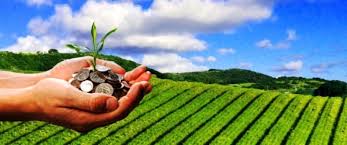W.B.C.S. Examination Notes On – Dry land Agriculture – Agriculture Notes.
Dryland Agriculture refers to growing of crops entirely under rainfed conditions.Continue Reading W.B.C.S. Examination Notes On – Dry land Agriculture – Agriculture Notes.
Based on the amount of rainfall received, dryland agriculture can be grouped into three categories:
- Dry Farming: Cultivation of crops in areas where rainfall is less than 750 mm per annum
- Dryland Farming: Cultivation of crops in areas receiving rainfall above 750 mm
- Rainfed Farming: Cultivation of crops in regions receiving more than 1,150 mm.
Soil moisture dynamics in Dryland
During rainy period, a portion of the rain received goes as runoff and remaining part enters the soil. It generally percolates to the lower layers and sometimes, goes beyond the root zone of crops. After the rain, the surface soil gradually dries out either due to evaporation or transpiration or due to both.
Dryland agriculture occupies 68% of India’s cultivated area and supports 40% of the human and 60% of the livestock population. It produces 44% of food requirements, thus has and will continue to play a critical role in India’s food security. However, aberrant behavior of monsoon rainfall results in frequent droughts that impact resource poor farmers. Eroded and degraded soils with low water‐holding capacity and multiple nutrient deficiencies, declining groundwater table, etc.
contribute to low crop yields that lead to further land degradation. Managing land resources through a multidisciplinary approach in devising the most remunerative and environmentally appropriate land use characterizes Central Research Institute for Dryland Agriculture’s (CRIDA) approach for maximizing crop productivity, profitability, and sustainability of dryland agriculture.
Characterizing bio‐physical and socio‐economic resources, integrated watershed development, improvement of rainwater use efficiency, contingency crop planning, diversification of agriculture through livestock farming, alternate land uses, integrated soil‐nutrient‐water‐crop management, and efficient farm implements can ensure long‐term sustainability of dryland agriculture in India.
Apart from these, evolving an institutional framework, improving credit availability and input supply systems, extension of crop insurance and launching of on‐farm research cum pilot projects in farmers’ participatory mode also need to be focused.
Dryland Agriculture refers to cultivation of crops entirely under natural rainfall without irrigation. It is a form of subsistence farming in the regions where deficit of the soil moisture retards the growth of water consuming crops like rice (Oryza sativa), sugarcane etc. Dryland areas are characterized by low and erratic rainfall and no assured irrigation facilities. Dryland agriculture is important for the economy as most of the coarse grain crops, pulses, oilseeds, and raw cotton are grown on these lands. Dryland areas receive rainfall between 500 and 1200 mm.
Types of Dryland Agriculture
Depending on the amount of rainfall received, dryland agriculture has been grouped into three categories:
- Dry farming: it is production of crops without irrigation in areas where annual rainfall is less than 750 mm. Crop failures are more frequent under dry farming condition owing to prolonged dry spells during crop period. The growing season is less than 200 days. It is generally practiced in arid regions of the country
- Dryland farming: cultivation of crops in areas receiving rainfall above 750 mm is known as dryland farming. Dry spell during crop duration occurs, but crop failures are less frequent. Semi-arid regions are included under this category.
- Rainfed farming: It is practice of crop cultivation without irrigation in areas receiving 1150 mm rainfall, mostly in sub-humid and humid areas. Here chances of crop failure and water stress are very less.
Please subscribe here to get all future updates on this post/page/category/website


 Toll Free 1800 572 9282
Toll Free 1800 572 9282  mailus@wbcsmadeeasy.in
mailus@wbcsmadeeasy.in



















































































































